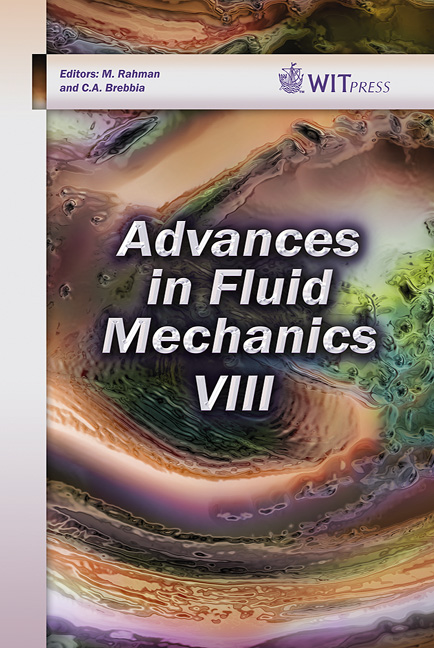Pressure-enthalpy Coupling For Subsonic Flows With Density Variation
Price
Free (open access)
Transaction
Volume
69
Pages
10
Page Range
127 - 136
Published
2010
Size
837 kb
Paper DOI
10.2495/AFM100111
Copyright
WIT Press
Author(s)
M. Emans, S. Frolov, B. Lidskii, V. Posvyanskii, Z. Žunič & B. Basara
Abstract
The method we present is derived from the SIMPLE algorithm. Instead of solving the linear equations for each variable and the pressure-correction equation separately in a so called segregated manner it relies on the solution of a linear system that comprises the discretisation of enthalpy and pressure-correction equation that are linked through physical coupling terms. These coupling terms are deduced from a more accurate approximation of the density update (compared to standard SIMPLE method) that is reasonable with respect to the thermodynamic formulation of the density increment. The method leads to a considerable acceleration of the non-linear SIMPLE convergence not only in cases characterised by a global density change due to the rise of the pressure, but also if the enthalpy is merely spatially distributed in the computational domain. In this contribution we will first discuss the key idea of the new method and compare it to established techniques. Then we will demonstrate its advantages in terms of computational efficiency and robustness for industrial CFD applications, e.g. combustion and engine flow calculations on unstructured grids. Keywords: finite volumes, pressure-enthalpy coupling, variable-density flow, CFD. 1 Introduction Robust methods that provide an appropriate approximation of the solution of the Navier–Stokes equations for CFD (computational fluid dynamics) applications employ finite volumes for the spatial discretisation and master the non-linearity of
Keywords
finite volumes, pressure-enthalpy coupling, variable-density flow, CFD





